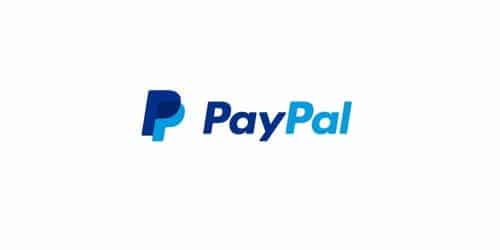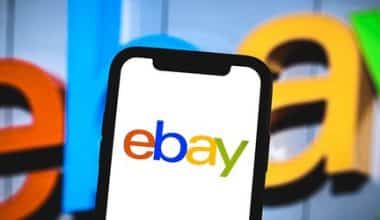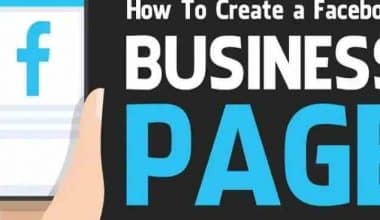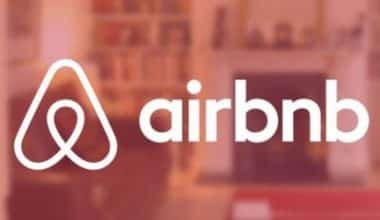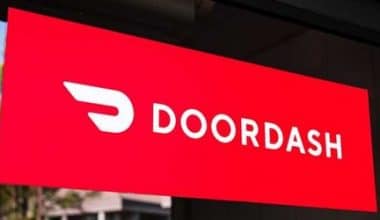PayPal makes money largely through the processing of client transactions on the Payments Platform and through additional value-added services. Thus, the revenue streams are separated into transaction revenues and total payments revenues based on the volume of activity. In addition, value-added services such as interest and fees collected on loans and interest receivable are provided. PayPal processed $1.25 trillion in total transactions in 2021, with net revenues of $25.4 billion and an operating income of $4.3 billion.
Who Owns PayPal?
Before delving into the PayPal business model, it is crucial to note that, as of this writing, PayPal is a subsidiary of eBay, which was purchased for $1.5 billion in 2002.
That was the deal that made billionaires out of entrepreneurs like Peter Thiel, Elon Musk, and Reid Hoffman, who founded firms like Founders Fund, Tesla, and LinkedIn.
The agreement was reached only a few months after PayPal went public. In reality, at the time, eBay customers constituted the vast majority of PayPal’s users.
According to cnet.com, “63 percent of transaction dollar volume in the first nine months of 2001 came from settling auction purchases, notably on eBay.”
It’s worth delving into PayPal’s founding story since it reveals some crucial strategic insights into its early growth and user acquisition, up until its partnership with eBay.
PayPal’s History
PayPal is one of the world’s most well-known and profitable fintech companies, known for making it simple to transfer money from anywhere in the globe via the internet. But that was not how the company began.
Paypal was founded in December 1998 as Confinity by Peter Thiel, Luke Nosek, and Max Levchin on the concept that consumers and companies needed a low-cost and simple payment system as an alternative to the sluggish and inconvenient cheque. From there, they merged and demerged with eBay, acquired a number of creative firms, and now offer a full stack of financial services for 34 million merchants and 392 million consumers across 200 markets, ranging from payments to credit to buying/selling and HODLing cryptocurrency.
The internet was notorious in the 1990s for fraudulent transactions. And shopping online exposed you to either hacker who would steal your financial identities or fly-by-night operators who would offer you the world only to swindle you later. The Internet’s wild west days. PayPal saw an opportunity in the problem and began developing a system that would make payment security while also ensuring merchants kept their half of the contract.
They accomplished the first by encrypting the information supplied by clients on their side, revealing just their email IDs to the outside world when making a payment. And this had the added benefit of not requiring consumers to enter their account credentials or card numbers every time they wished to make another payment, instead electing to enter their email id associated with their PayPal accounts.
Read Also: PAYPAL LOGO: Meaning, Font, History & Evolution
To ensure that bad actor merchants were weeded out, Paypal would enter into an agreement that the money would be provided to the merchants only upon receipt of their goods and services. And, if there were any issues with the goods, PayPal would make it simple for customers to get their money back. Because most merchants are used to having some accounts receivable in their business, the fair players consented to the terms.
However, the bad actors became uneasy with such arrangements and chose to opt out instead. Increasing system trust.
From there, the company moved on to purchase a slew of financial service apps, including Braintree and Venmo, solidifying its identity as a solid digital company that offers financial services (remember this was before FinTech as a term was coined).
How Does PayPal Work?
PayPal allows private individuals and corporations to create accounts on its network in order to send and receive money. The company provides a variety of merchant services, such as direct checkout connections for eCommerce platforms, shipping savings, fraud monitoring and prevention, dispute management, loans, and other services.
PayPal is accessible via PC as well as a mobile app for Android and iOS smartphones. The corporation works in over 200 countries and has almost 400 million registered users worldwide. PayPal also has various payment-related businesses, including Venmo, iZettle, and Xoom.
eBay purchased PayPal in 2002, and the two companies have maintained a working relationship ever since. However, eBay lost a significant portion of its shares in 2015, and Vanguard is currently the largest shareholder in PayPal, with 7.6%. Fidelity Management owns 3.87% of the company, while BlackRock owns 4.46%.
If PayPal Is Free, How Does It Make Money?
To answer this question, keep in mind that PayPal does more than merely process payments and provides a platform for customers to send and receive money. PayPal provides a diverse range of financial and transaction services, including both free and paid services.
Most PayPal customers’ needs are free, such as making a payment or transferring funds from a linked bank account. Currency conversions, out-of-network, and overseas ATM withdrawals, and a slew of merchant fees, on the other hand, fall under the paid category.
PayPal’s Business Model
PayPal generates money by charging its users transaction fees on payments made via its network. It also makes money by selling card readers and making business loans.
Referral fees for cash-back incentives and interchange fees for its debit card are charged by the corporation. PayPal also earns money by charging interest on cash loans made to financial institutions such as banks.
PayPal’s Main Revenue Sources
#1. Transaction Charges
PayPal’s main source of revenue is its numerous transaction fees. These can take numerous forms, such as a percentage of an e-commerce purchase, a money transfer, or a fee on foreign currency conversion.
When a merchant receives cash from a customer for a purchase, he or she must pay transaction fees. In other circumstances, such as foreign currency transfers, the end user is the one directly generating revenue for PayPal.
Aside from transaction fees and other services, PayPal does not reveal revenue by product category. However, it is well known that PayPal’s transaction business is primarily a high-volume, low-margin enterprise. Customers or merchants will often pay no more than a few percent for each transaction. Given the highly competitive nature of the transaction business, where PayPal competes against credit cards, banks, and other FinTech firms, this is vital.
#2. Credit
PayPal provides certain lending solutions to its merchants. Because PayPal has a high level of visibility into a merchant’s revenue stream, it can lead to these merchants with confidence in their capacity to repay. These loans can assist retailers during sluggish parts of the year, cover working capital required for inventory prior to the holidays, and other such short-term financial requirements. PayPal also provides traditional small business loans in addition to these sales-backed loans.
There isn’t much publicly available information about PayPal’s loan products, such as typical annual percentage rates (APRs). However, based on what is known, it appears that this is an additional service for merchants to help them succeed and remain loyal to the PayPal platform, rather than a significant portion of PayPal’s earnings.
#3. Venmo PayPal’s Digital Wallet Service
Venmo charges fees in at least eight different methods. Venmo’s monetization has been an interesting balancing act, as PayPal provides the basic money transfer service for free but charges for a range of bonuses and extra features.
Venmo, for example, provides connected credit cards with APRs in the double digits. Customers must pay a fee to withdraw funds from their accounts. Venmo also provides instant transfers; however, users must pay a charge to avoid the wait. The wallet service is also offering other functions like bitcoin trading and payroll check cashing, for which it can make a decent amount of money.
#4. Partnership Fees
PayPal makes money by partnering with retailers and other e-commerce sites. It made a huge effort into this space in 2020 when it paid $4 billion for the shopping and rewards app Honey.
Honey is a free web software that allows users to locate discounts and special deals at over 30,000 online stores. These retailers frequently offer incentives to PayPal’s Honey and other comparable third parties for increasing traffic to their websites.
This demonstrates the strength of PayPal’s platform and network effects. It may encourage its payment clients and Venmo users to use Honey, save money, and make affiliate referral revenue for PayPal at the same time. In this situation, the store pays for the incentive, therefore the client is not charged for using this service.
Other Ways Paypal Makes Money
#5. Fees for cashback rewards
PayPal announced in August 2017 that it would issue a Mastercard-branded credit card that would also deliver cashback incentives. They receive a percentage of the transaction volume by pushing spending at selected partners.
#6. Exchange Rates
PayPal offers an American-only debit card. For each transaction processed by cardholders, it charges an interchange fee set by MasterCard.
#7. Cashback Referral Fees
PayPal debit cardholders receive rewards when they make purchases through PayPal’s partner store network. For sending it business, its partners pay PayPal a commission on the sale.
#8. Commissions from affiliates
Paypal purchased Honey.com, a shopping payback Chrome extension, and app, in 2020 to increase user retention and collect affiliate commissions from Honey’s 30,000 merchant partners.
PayPal charges interest on cash loans it makes to financial institutions such as banks.
PayPal’s collaboration with UPS allows them to offer its consumers lower shipping costs.
Paypal Future Expansion
PayPal has hinted that it may offer cryptocurrency services, with the corporation planning to test the concept in the American market in 2020.
Subsidiaries, Acquisitions, and Exits at PayPal
Aside from being acquired by eBay for $1.5 billion, PayPal has made a number of acquisitions of its own.
PayPal Holdings, Inc. has made 22 acquisitions to date. In addition, PayPal had 16 investments, four lead investments, and four successful exits.
PayPal Revenue and Profit
PayPal’s revenue in 2020 was $21.45 billion.
Because PayPal Holdings, Inc. is a publicly traded business, they are required by the Securities Exchange Act of 1934 to file continuous financial filings with the United States Securities and Exchange Commission (SEC). PayPal’s publicly available financial records, including yearly reports, can be found on its website in the investor area.
What is the Business and Income Model of PayPal?
PayPal produces money by combining several revenue methods within their firm, which are as follows:
- FFS (fee-for-service) business model
- Business model B2B2C (partnerships)
- Model of interest revenue
- A business model based on subscriptions
The business model is based on mergers and acquisitions (M&A).
PayPal Funding, Net wealth, and Market Capitalization
PayPal has raised $216 million in 5 rounds of funding and has a market valuation of $323.75 billion as of August 2021, according to its Crunchbase profile.
eBay paid $1.5 billion for PayPal on July 8, 2002.
Paypal’s Competitors
The following firms are among PayPal’s biggest competitors in the online payments market:
- GoCardless
- Payoneer
- Stripe
- Authorize.net
- Apple Pay for businesses
- Skrill
Conclusion
PayPal has established a massive business that spans the great majority of the globe. While PayPal began largely to facilitate e-commerce transactions, it has now expanded its product offering to create a far more sophisticated and all-encompassing platform. As Venmo grows in popularity and PayPal adds additional services like Honey, it should be able to expand its business and create new revenue streams.
Related Articles
- PAYPAL LOGO: Meaning, Font, History & Evolution
- HOW DO YOU USE VENMO: What It Is and How to Use It
- How Does Paypal Work? Pros, Cons & All You Need!!!
- How To Add Money To Venmo: Best Easy Guide (Updated)
- Venmo Account Frozen: Best 2022 Stress-free Solutions (Why is Venmo Freezing?)
